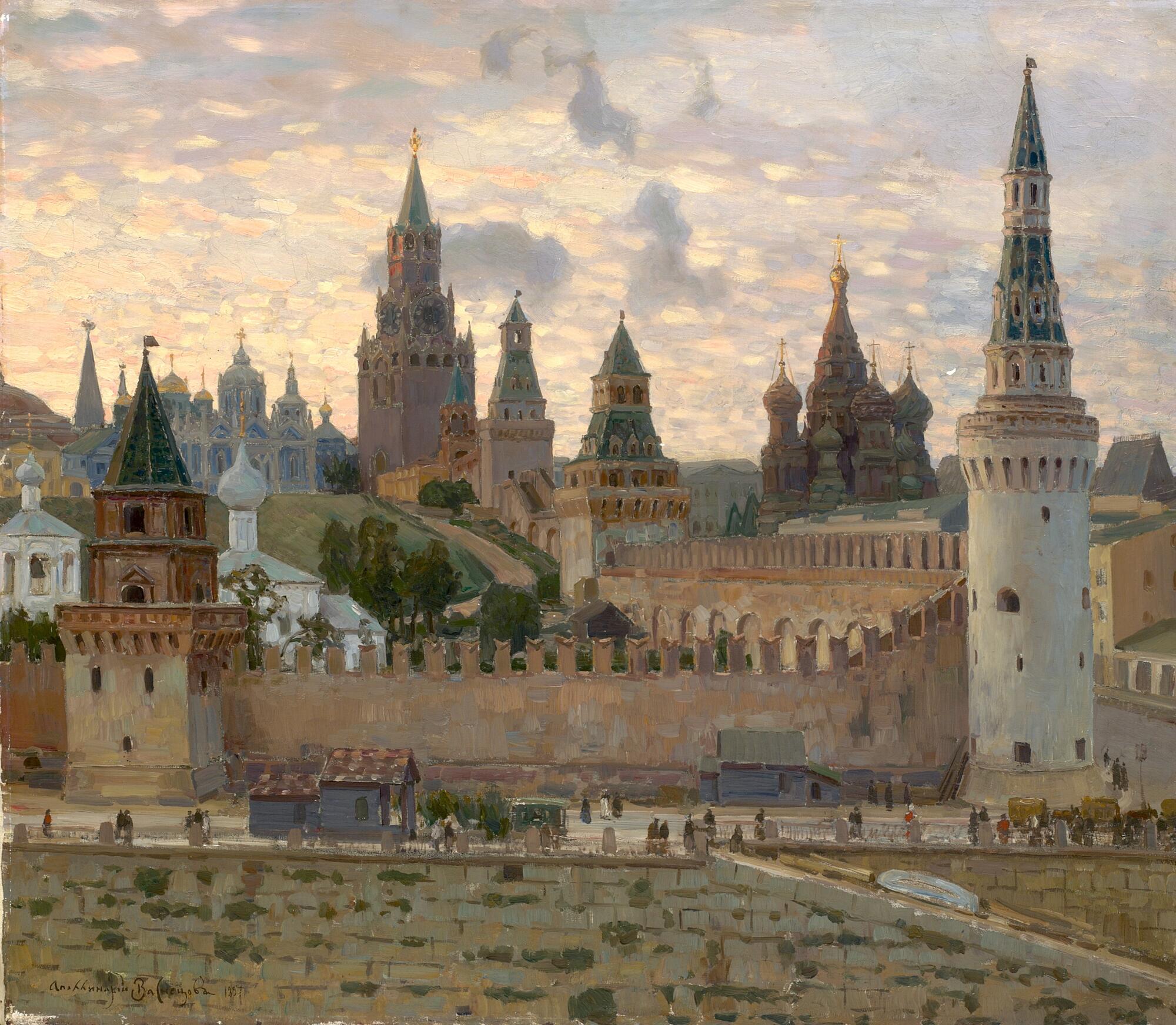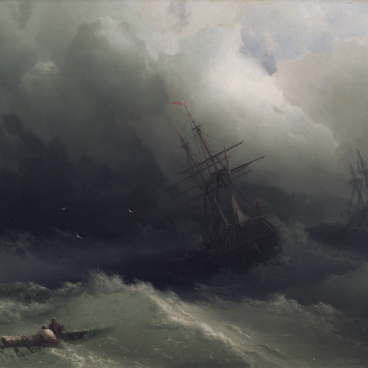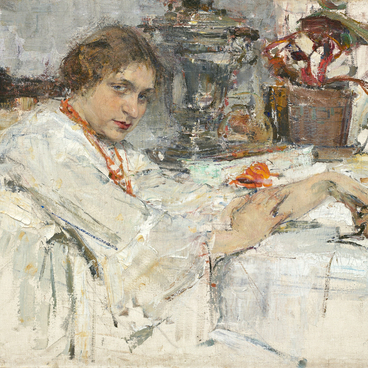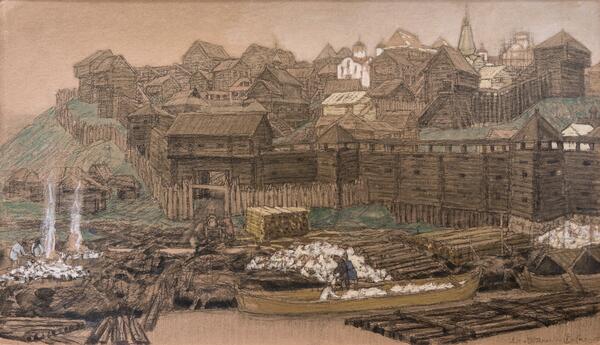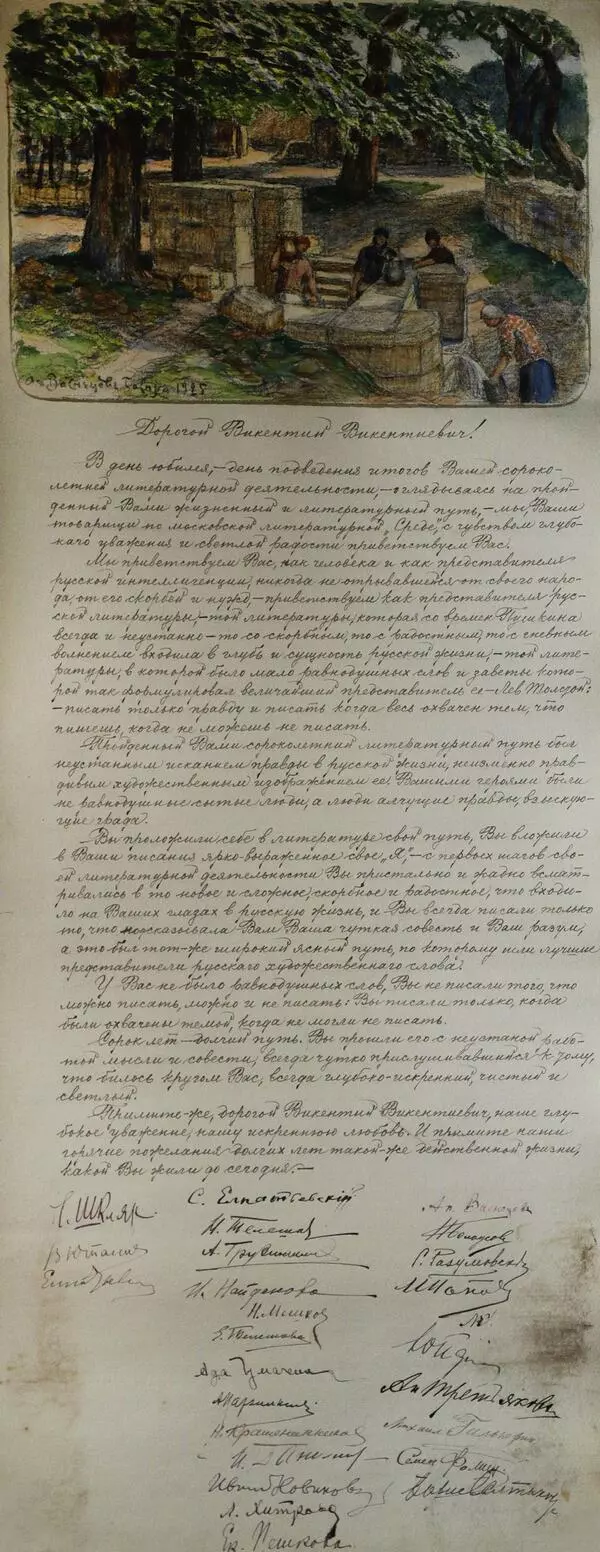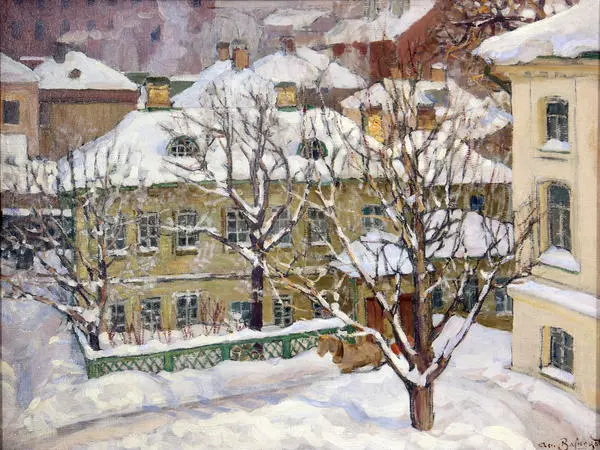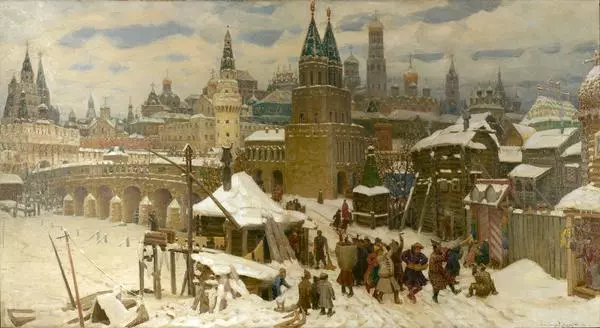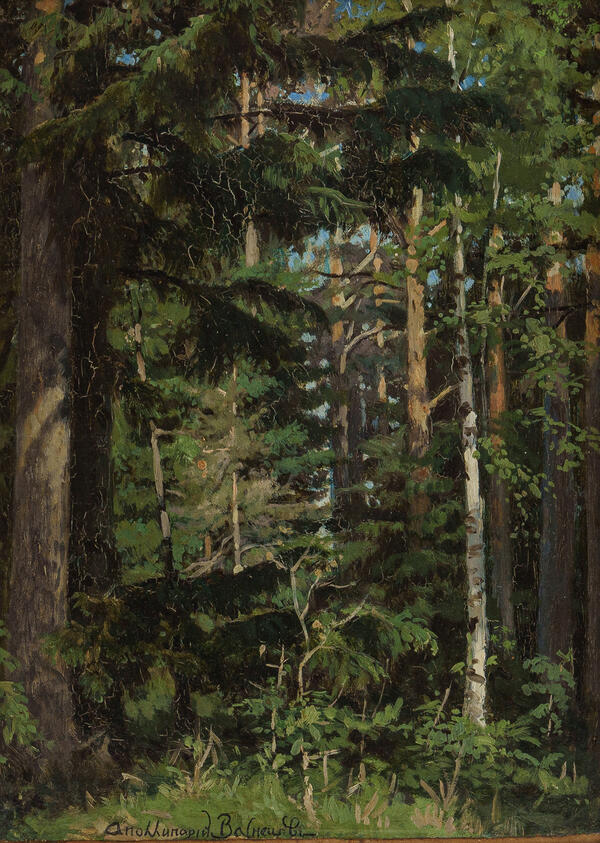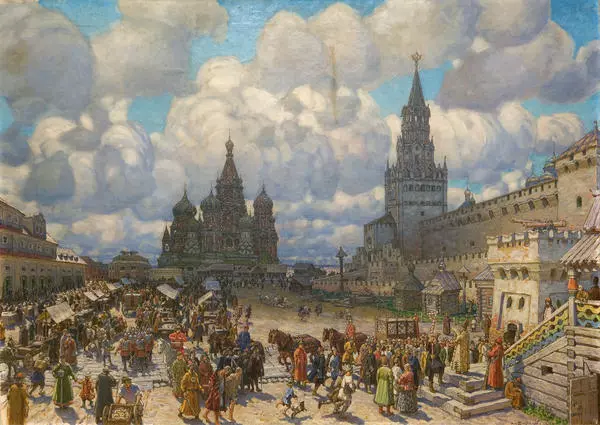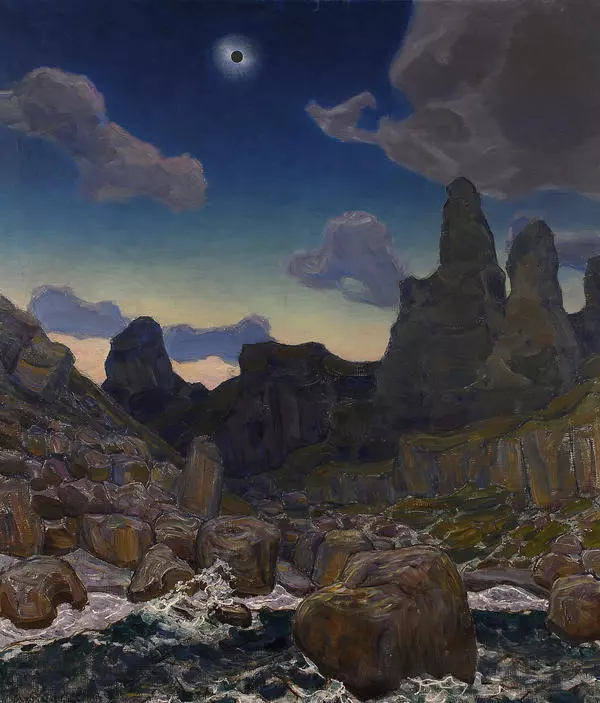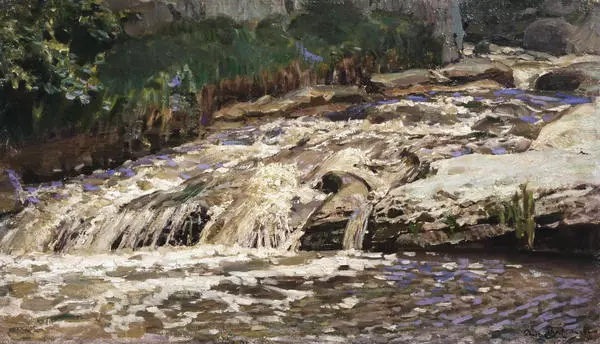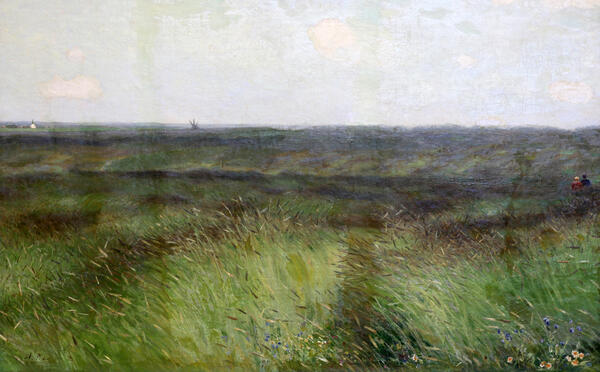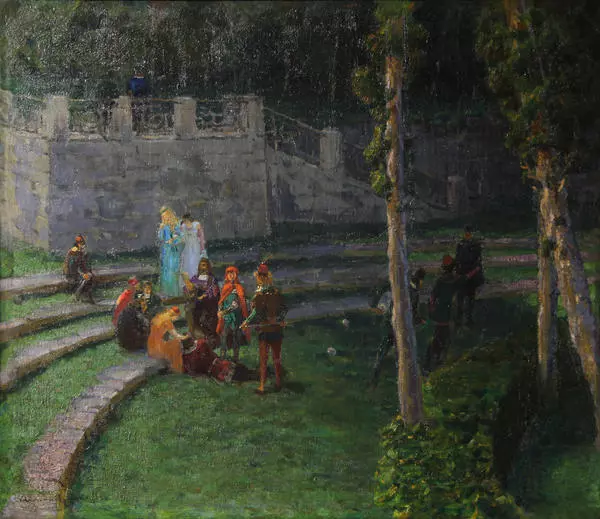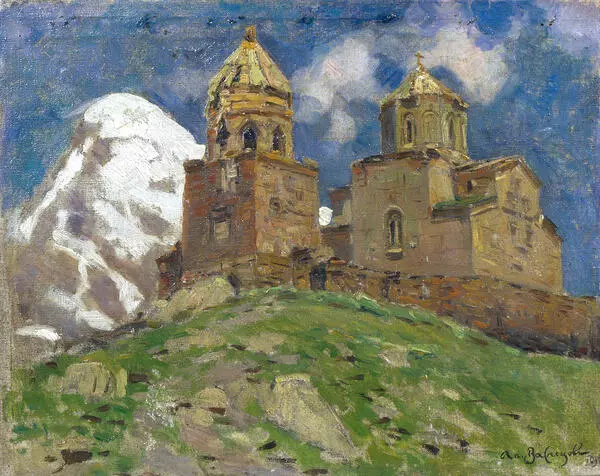Apollinary Vasnetsov was a Russian artist, master of historical painting, art critic, and brother of Viktor Vasnetsov. The artist’s father, a priest, was an enlightened man, who instilled in Apollinary the love for natural sciences and astronomy. “At night he drew my attention to the sky, and from childhood I knew the main constellations and stars… The love for nature led me to the love for landscape, and this I owe to my father, ” the artist wrote in his autobiography. Apollinary did not receive a systematic education, but at the same time his non-official teachers were friends of his older brother — artists Ilya Repin, Ivan Kramskoy, and Vasily Polenov. Communication with the artists of the Abramtsevo group replaced the Academy of Arts for him. He entered the history of Russian painting as a master of the monumental and epic landscape, praising the nature of the Urals and Siberia. The artist wanted to show the beauty of his native nature to people, he strove to convey to the Russian people the idea of the greatness and strength of their land.
The image of the historic city is the central theme in the work of Apollinary Vasnetsov. For the first time he turned to the monuments of the capital in the late 1870s, and started creating a unique artistic chronicle since then. From the 1890s until the end of his life, he worked on paintings dedicated to the history of Moscow. Vasnetsov considered the image of the city to be one of the strongest incarnations of culture. He said that the history of the city reflects not only the history of one region, but also the history of an entire era.
The central image of not only the city but also the entire Russian state is the Moscow Kremlin. The artist was impressed by the look of the old Kremlin. He lived not far from the place, on Ostozhenka Street, and the artist”s favorite routes were walks around the Kremlin, during which he admired the ancient walls, towers, cathedrals, in order to transfer them later to canvases.
Working on the images of the capital, the artist became close with historians and archaeologists. He became a member of the Moscow Archaeological Society, and later — an honorary chairman of the Commission for the Study of Old Moscow. He studied ancient icons and directed the restorations. He recreated the look of the city not only on his canvases, but also in real life.
The painting “The Moscow Kremlin” has preserved for history a monument that was lost. Behind the Spasskaya tower, almost closely adjacent to the Kremlin wall, the Ascension Monastery is depicted. Princess Evdokia Dmitrievna, the wife of the Moscow prince Dmitry Donskoy, founded this monastery at the end of the 14th century in memory of the Kulikovo battle. The monastery stood on the territory of the Kremlin for about six centuries. It was destroyed in 1929.
The image of the historic city is the central theme in the work of Apollinary Vasnetsov. For the first time he turned to the monuments of the capital in the late 1870s, and started creating a unique artistic chronicle since then. From the 1890s until the end of his life, he worked on paintings dedicated to the history of Moscow. Vasnetsov considered the image of the city to be one of the strongest incarnations of culture. He said that the history of the city reflects not only the history of one region, but also the history of an entire era.
The central image of not only the city but also the entire Russian state is the Moscow Kremlin. The artist was impressed by the look of the old Kremlin. He lived not far from the place, on Ostozhenka Street, and the artist”s favorite routes were walks around the Kremlin, during which he admired the ancient walls, towers, cathedrals, in order to transfer them later to canvases.
Working on the images of the capital, the artist became close with historians and archaeologists. He became a member of the Moscow Archaeological Society, and later — an honorary chairman of the Commission for the Study of Old Moscow. He studied ancient icons and directed the restorations. He recreated the look of the city not only on his canvases, but also in real life.
The painting “The Moscow Kremlin” has preserved for history a monument that was lost. Behind the Spasskaya tower, almost closely adjacent to the Kremlin wall, the Ascension Monastery is depicted. Princess Evdokia Dmitrievna, the wife of the Moscow prince Dmitry Donskoy, founded this monastery at the end of the 14th century in memory of the Kulikovo battle. The monastery stood on the territory of the Kremlin for about six centuries. It was destroyed in 1929.
